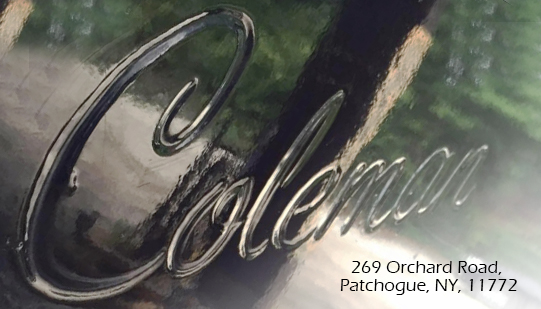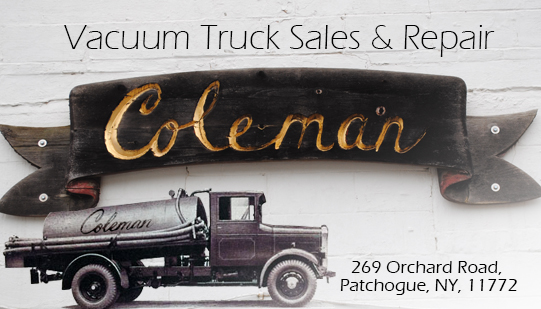How Vacuum Trucks Work - Coleman Vacuum Systems Inc.
Coleman Vacuum Systems Inc.

A common material to be transport is septic liquids (or more broadly: fecal matter) which is human excreta mixed with water, e.g. from septic tanks and pit latrines). They also transport sewage sludge, industrial liquids, or fecal matter from animal waste from livestock facilities with pens.
Vacuum trucks can be equipped with a high pressure pump if they are used to clean out sewers from sand.
Vacuum Truck Pumps
They generally use a low-volume sliding vane pump or a liquid ring pump to create a negative air pressure. The use of diaphragm mud pumps is less common, but with the advantage of a simpler design and usually lower overall costs. The disadvantage is that mechanical parts come into contact with the sludge, which is not the case for the more common vacuum pumps.
The vacuum truck truck can be configured to be a direct belt drive, or a hydraulic drive system.
Suction Hoses
The suction hoses are typically 2" - 4" (or 50mm to 100mm) in diameter with 3" (or 75mm) being the norm. The possible length depends on various factors mainly related to the lift and other pressure losses. It is usually impossible to extend it beyond 50 metres (160 ft).
Emptying the Vacuum Truck Tanker
Normally a tanker is emptied by gravity. It is possible to pressurize the vacuum tank to "pressure out" the liquid quicker (or against a small difference in elevation). This procedure is detrimental for the equipment, hence is used in special situations.
Uses for Vacuum Trucks
Vacuum trucks are used by town and municipal governments, as well as commercial entities around the world.
Vacuum trucks are used by town and municipal governments, as well as commercial entities around the world.
Human Excreta
Several types of non-centralized sanitation systems are served by vacuum trucks. They are used to empty septic fluids from cesspits, septic tanks, pit latrines, and communal latrines, for street cleanup, for sewer clean out, and for individual septic systems. The trucks are used in the cleaning of sanitary sewer pumping stations. Vacuum trucks are used to empty portable toilets. In commercial aviation, vacuum trucks are used to collect waste from airplane toilets.
Vacuum trucks discharge these wastes to the sewer network, to a wastewater treatment plant, or—usually illegally, for example in many developing countries— directly into the environment. The latter practice, called "institutionalized open defecation", is dangerous since it constitutes a public health and environmental hazard.
Other Uses for Vacuum Trucks
Vacuum trucks are also used for exposing underground utilities. The ground is jetted with water, and the vacuum truck sucks up the muddy product. This exposes the buried utility without the possibility of damage, as would be possible if a digging machine were used (i.e. tractor backhoe, tracked or wheeled excavator, ditch witches).
Vacuum trucks can also be used for cleanup of contaminated soil. Find the best Vacuum TruckParts at Coleman Vacuum Systems Inc.
Several types of non-centralized sanitation systems are served by vacuum trucks. They are used to empty septic fluids from cesspits, septic tanks, pit latrines, and communal latrines, for street cleanup, for sewer clean out, and for individual septic systems. The trucks are used in the cleaning of sanitary sewer pumping stations. Vacuum trucks are used to empty portable toilets. In commercial aviation, vacuum trucks are used to collect waste from airplane toilets.
Vacuum trucks discharge these wastes to the sewer network, to a wastewater treatment plant, or—usually illegally, for example in many developing countries— directly into the environment. The latter practice, called "institutionalized open defecation", is dangerous since it constitutes a public health and environmental hazard.
Industrial Liquids
Vacuum trucks are used in the petroleum industry, for cleaning of storage tanks and spills. They are also an important part of drilling oil and natural gas wells, as they are located at the drilling site. Vacuum trucks are used to remove drilling mud, drilling cuttings, cement, spills, and for removal of brine water from production tanks. They dispose of this in sump pits, treatment plants or if within safe levels may be spread in farm fields.
Vacuum trucks are used in the petroleum industry, for cleaning of storage tanks and spills. They are also an important part of drilling oil and natural gas wells, as they are located at the drilling site. Vacuum trucks are used to remove drilling mud, drilling cuttings, cement, spills, and for removal of brine water from production tanks. They dispose of this in sump pits, treatment plants or if within safe levels may be spread in farm fields.
Other Uses for Vacuum Trucks
Vacuum trucks are also used for exposing underground utilities. The ground is jetted with water, and the vacuum truck sucks up the muddy product. This exposes the buried utility without the possibility of damage, as would be possible if a digging machine were used (i.e. tractor backhoe, tracked or wheeled excavator, ditch witches).
Vacuum trucks can also be used for cleanup of contaminated soil. Find the best Vacuum TruckParts at Coleman Vacuum Systems Inc.








Comments
Post a Comment